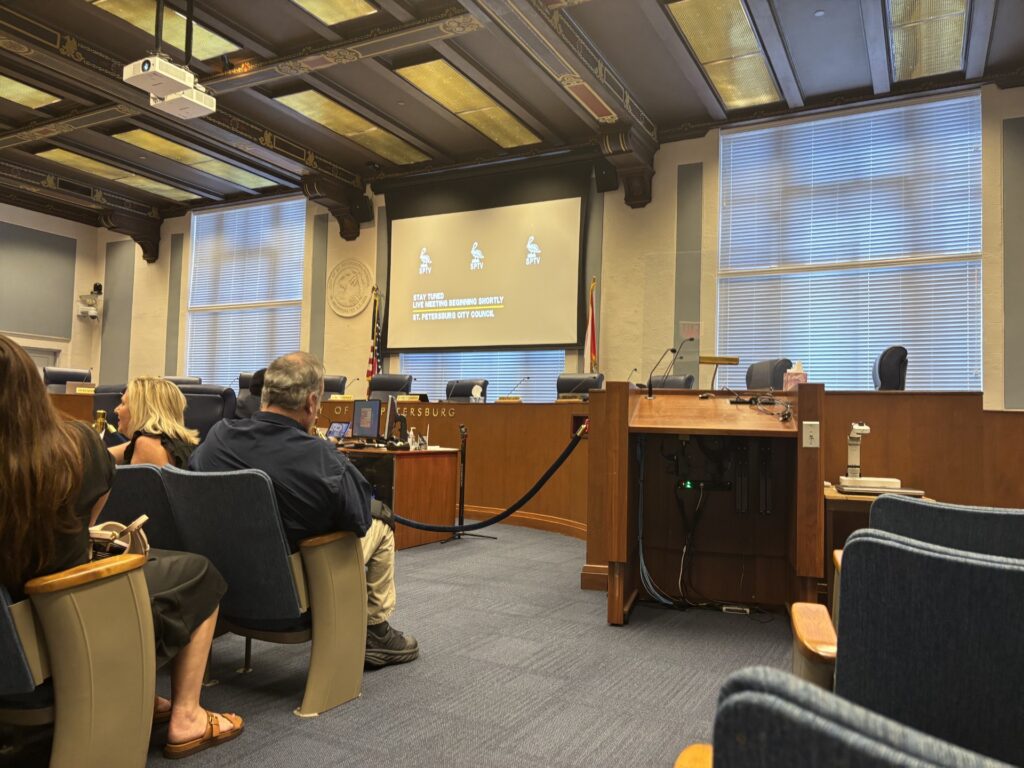
By Sofia Modica
The St. Petersburg City Council unanimously accepted a $262,000 grant from the Florida Department of Health to fund healthy snacks for children in after-school programs across 11 city recreation centers.
“This is good news,” District 7 council member Corey Givens Jr. said. “$262,000 grant from the Florida Department of Health…and we have a permanent contract that will basically make sure that our kids will have access to healthy and nutritious snacks.”
The grant, awarded annually since 2011, reimburses the city for nutritious snacks provided to school-age children during the academic year.
“I grew up in Childs Park, born in Childs Park, and when I see programs that benefit youth who are low income, low access, they live in food insecure areas, I am always championing causes that benefit them,” Givens said.
Across Pinellas County, one in five children experience food insecurity, according to David Himmelgreen, a professor of anthropology at the University of South Florida.
“It is about 17.6% child food insecurity in Pinellas County, according to Florida health charts,” he said. “So we’re talking about, you know, about 18%, one-in-five, one-in-six depending on the year, children are food insecure in the county.”
At the council meeting, community enrichment administrator, Mike Jefferis, said that the program successfully served more than 181,000 snacks last year. He also noted that the snacks comply with federal dietary standards and are sourced via Pinellas County Schools.
“We’re not talking Doritos, we’re not talking you know, chocolates,” he said. “We’re talking cheese sticks. We’re talking about items that have fruits, vegetables, grains. And the kids are responding very, very well.”
While the snacks are provided to children enrolled in city programs, the city also offers breakfast and lunch during the summer months to all residents ages 17 and under.
Still, food access remains a concern for many families in St. Petersburg. Himmelgreen pointed to working families as an emerging group at risk.
“I think what is happening too is an increasing number of families are becoming food insecure who are not living in poverty, they’re working households, and they are just finding it really difficult on money that is the income to survive and thrive,” he said. “The first thing, often, the first thing to be compromised is food and people do slip into food insecurity, especially households with children, at higher rates than households without children.”
Himmelgreen referenced the Asset-Limited, Income Constrained and Employed report, which tracks families and notes that these working households make up a large portion of food-insecure homes. He added that the USDA’s recent termination of its annual household food security survey will also make it harder to measure hunger trends nationwide.
That national picture, local leaders say, is reflected right here in St. Petersburg. Givens noted that for many children, food insecurity begins as soon as the school day ends.
“You have a very vulnerable population in St. Pete,” he said. “Not only do they not have access to those healthy and nutritious items, but they don’t really have healthy and nutritious eating habits in the household. And I know, because I grew up in one.”
That firsthand perspective, he said, is what motivates his push for greater nutrition awareness and city funding.
I want the city to know that there is an issue when it comes to the risk of obesity, and also when it comes to, again, raising awareness in general for healthy eating habits,” Givens said. “This is crucial that we have funding to expand and increase access to healthy and nutritious food.”
Himmelgreen echoed that sentiment, saying that programs like this one are vital to children’s health and academic success.
“There’s a lot of headwinds right now in terms of, you know, food assistance support, starting at the federal level all the way down to state and even local levels,” Himmelgreen said. “So I think this is why this program is even more important now. It’s important to have programs that one, feed children … but it’s also important that you know what they eat is good for them and helps to prevent diseases and conditions.”
As for the impact, Givens said it’s visible in the faces of children served by the program.
“I think it’s amazing when you see the smiles on these kids’ faces when they’re just getting carrots and apples and broccoli, you know, stuff that we probably wouldn’t want to eat. You know, these kids are excited to have it, because when you have nothing, something is everything.”



